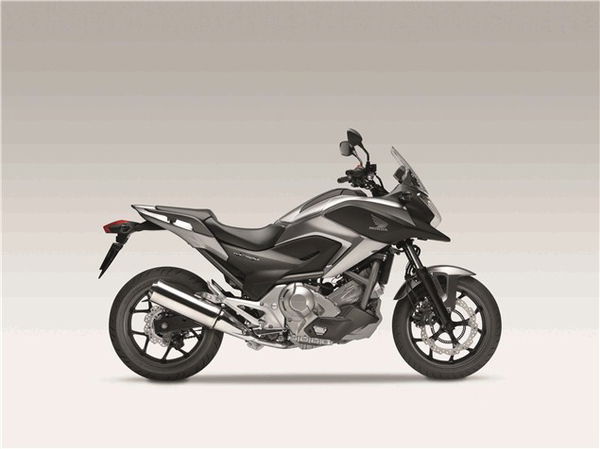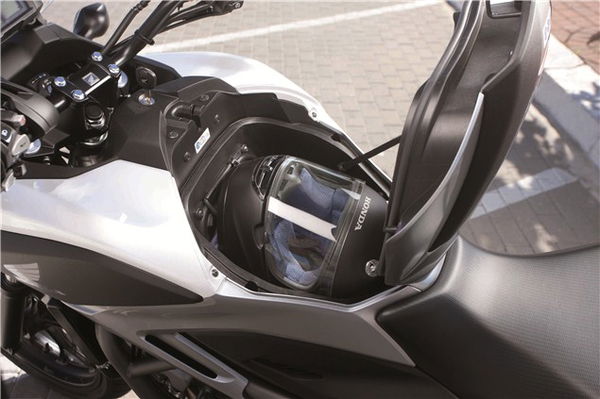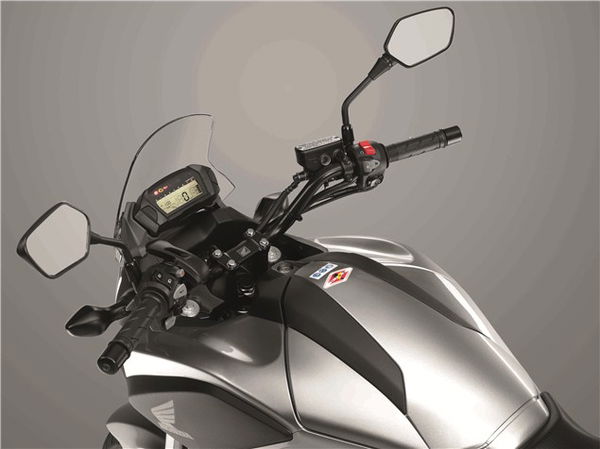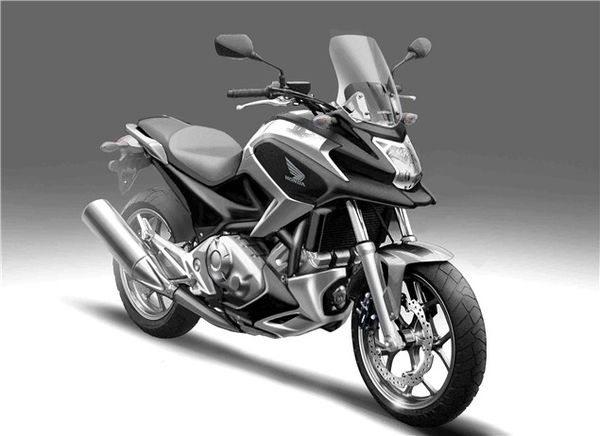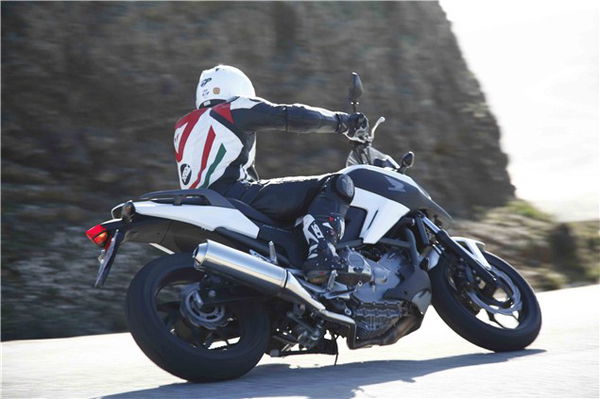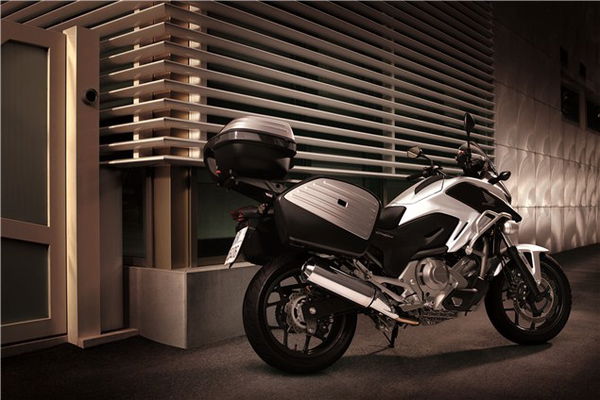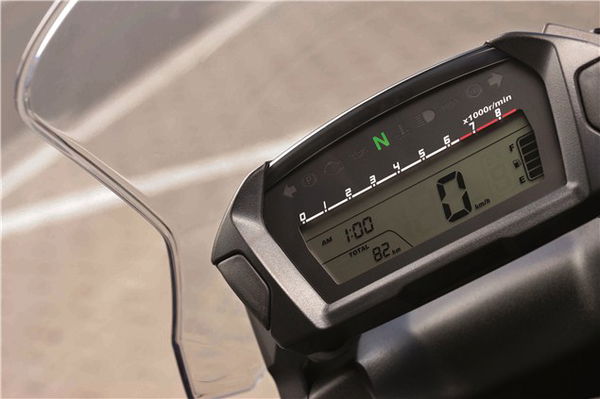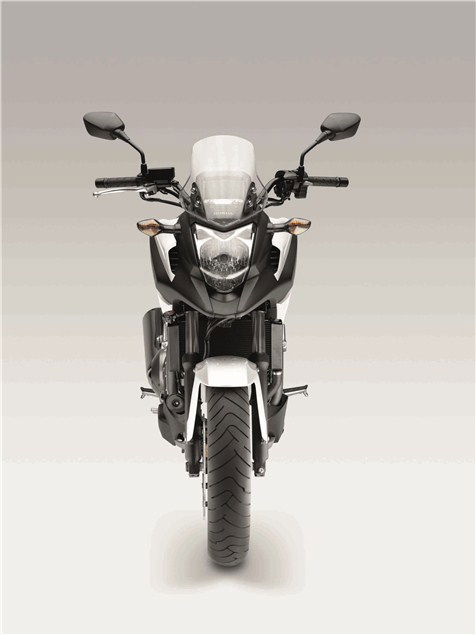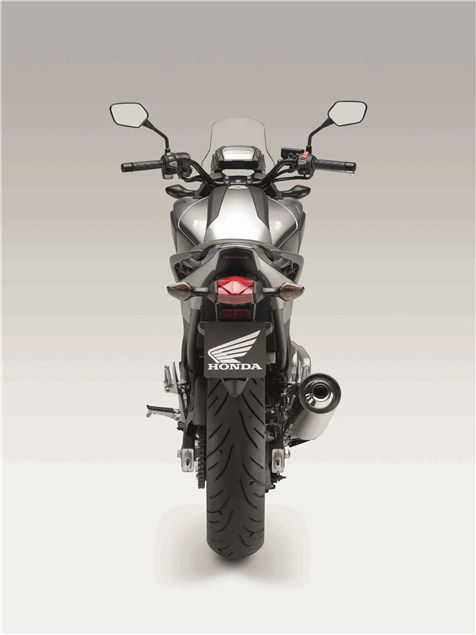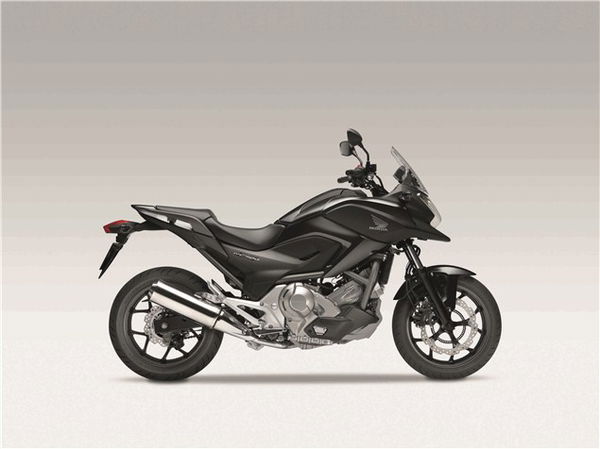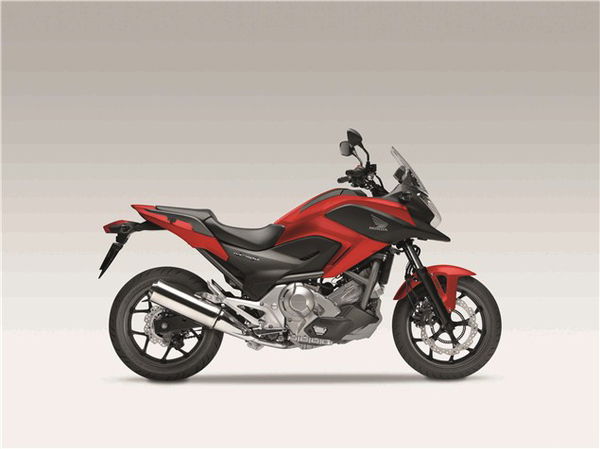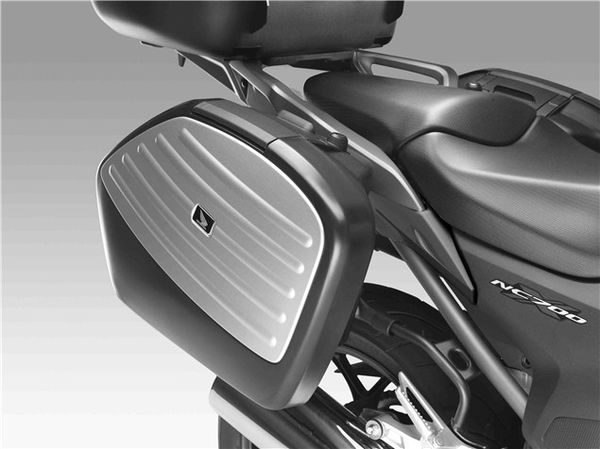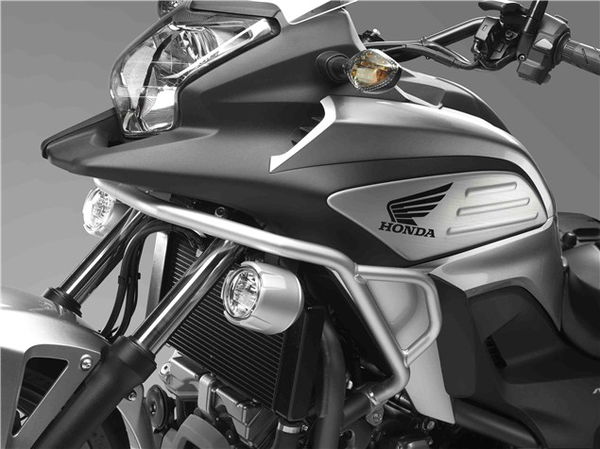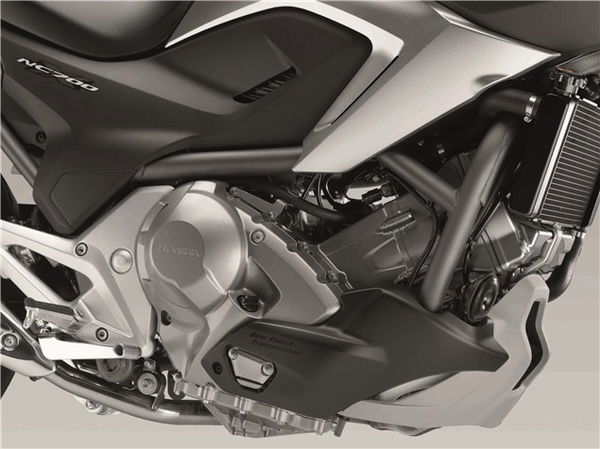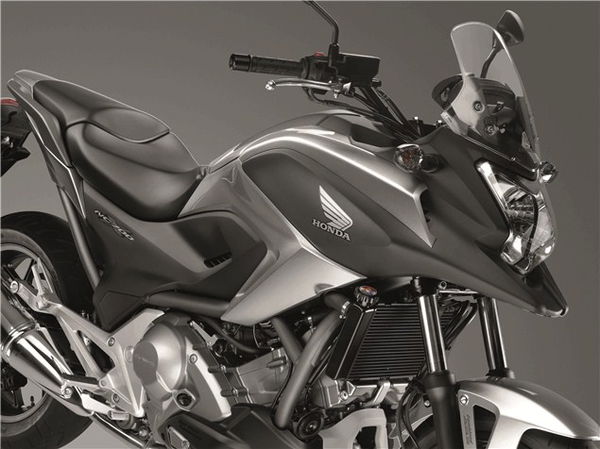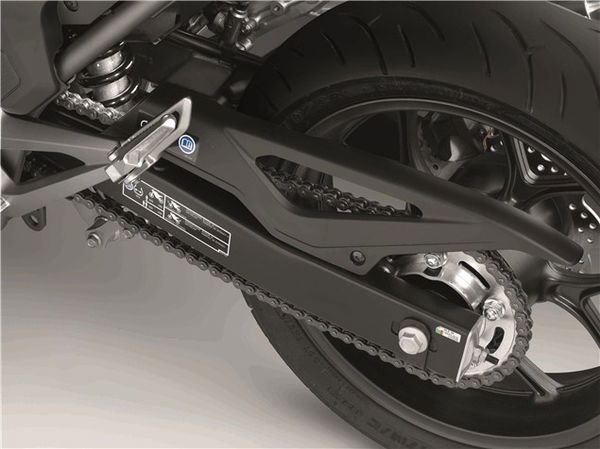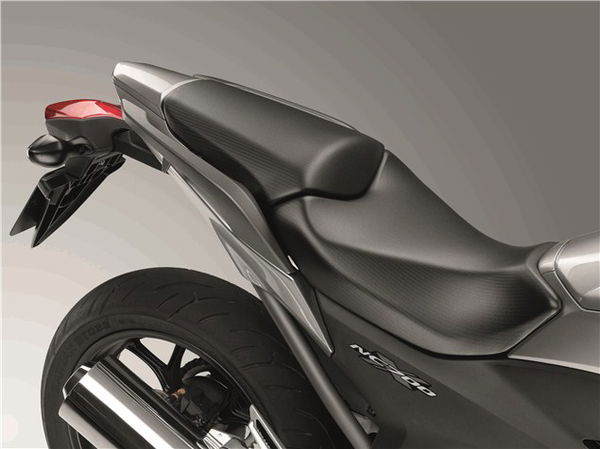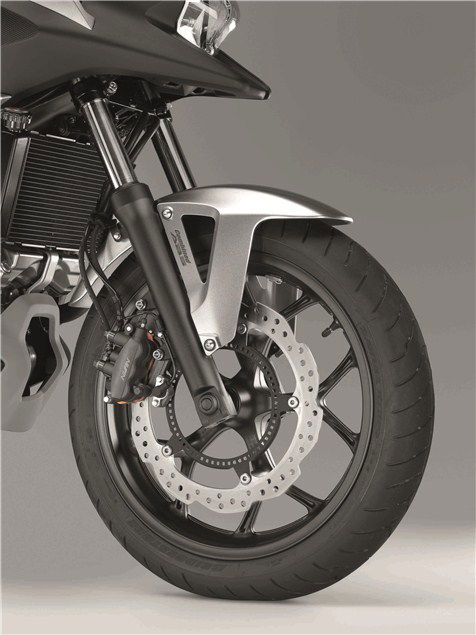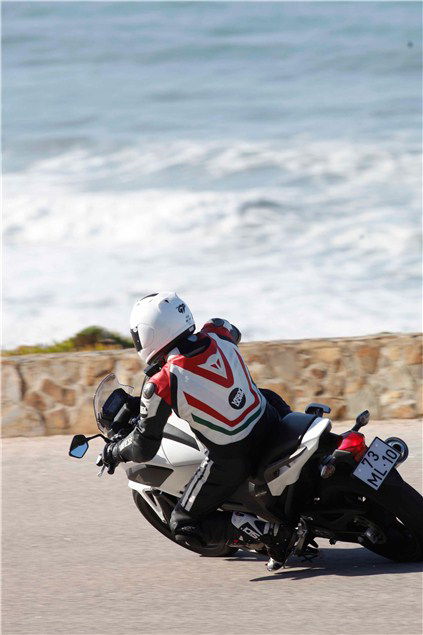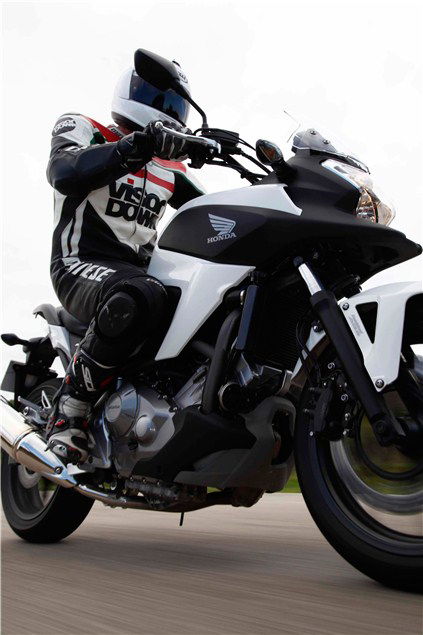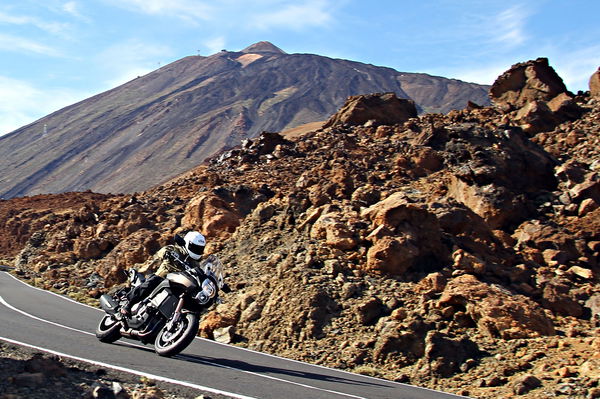First Ride: Honda NC700X review
Progressive Jazz
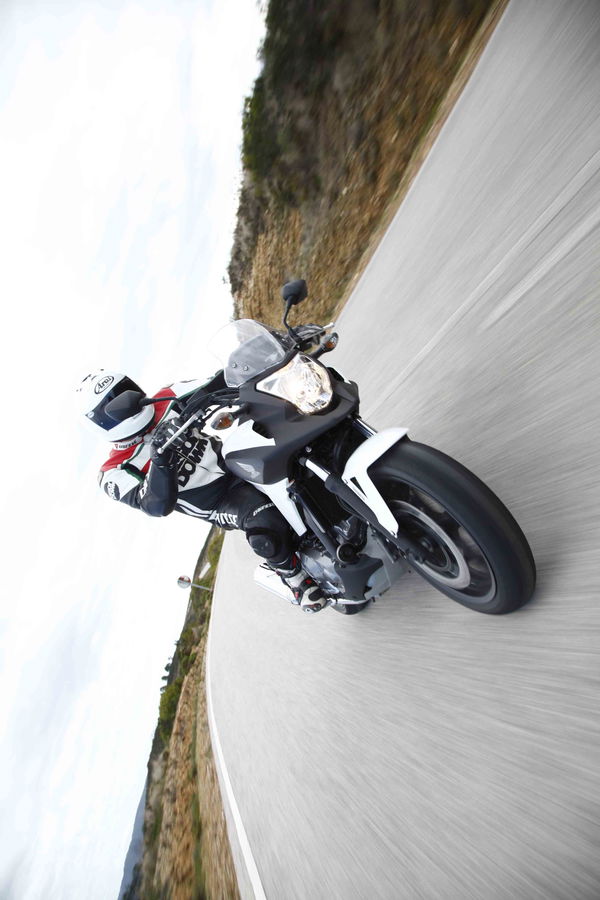
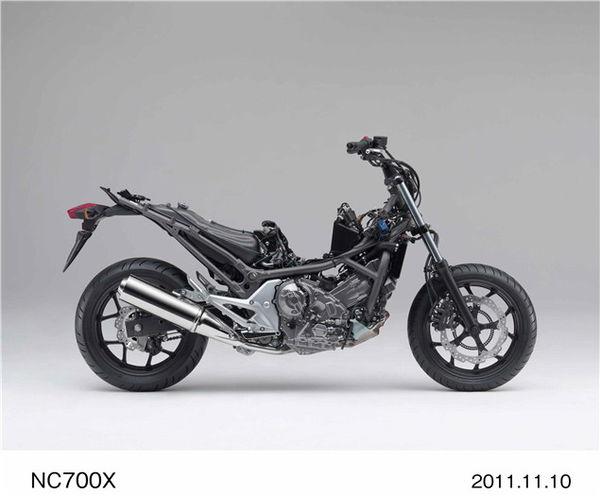
Where to start?
Well, let’s look at the facts first – or at least a very quick paraphrase of Honda’s lengthy NC700X mission statement. There’s a lot going on here – so much so that Honda officials felt the need to show us a ‘word cloud’ to help explain the bike’s positioning. I hope I never hear that phrase ever again.
The NC700X is an adventure-styled ‘fun crossover.’ What does that mean, you quite rightly ask? Well, it’s exactly the same bike as the NC700S and the recently launched Integra but with different clothes/handlebars. Honda call this base bike their ‘Mid Platform’.
There’s nothing new about this modular concept of bike production. Take the same engine and chassis, dress it up differently and pitch it into another market and another group of customers. It’s efficient and ubiquitous in the car world. As an example, the Fiat 500 uses Fiat Panda underpinnings and so too does the Ford Ka.
John Bloor founded Triumph on this very same platform-principle back in 1991 because it was an efficient way to create a range of motorbikes. You could also argue that Ducati have done a very good job of using their air cooled, belt-drive V-twin in a (modular) wide range of motorbikes over the years.
Honda has taken the modular approach with the NC (‘New Concept’) range. Underneath the NC700X, 700S and Integra are the same steel tube chassis, wheels, suspension and engine. One set of development costs, three bikes, three markets. It’s got to be efficient, hasn’t it?
Just as cannily, Honda tapped into their car division’s experience when they were developing the engine for the NC range. It is no coincidence that the project started with half a Honda Jazz engine. The finished motor might be bespoke but the cylinder’s bore and stroke are still the same as the Jazz.
Honda claim that the NC is about ‘commuting and fun’ and its pitched at a 90% male audience, the core of whom are in their thirties. The range is aimed at car drivers, people moving up from 125s, riding schools and new riders.
To satisfy this criteria the design brief was that it should be torquey, have a low centre of gravity and good stability. Also factor in class leading mpg and a ‘reasonable price’.
We were told that the NC was borne of market research. This information suggested that 90% of commuters never exceed 87mph or 6,000rpm. The engine was built around this data. Whether this was a good idea or not depended on who you spoke to - such was the spilt in opinion.
The chassis is ultra basic but ultra stable. With a conservative 27 degrees of rake, 110mm of trail, a 1540mm wheelbase and a very low centre of gravity its more stable than a horse’s house. The suspension is crude but effective, the brakes the same. Other than the fact that there’s room to store full face helmet where the tank is, there’s nothing to report here.
The engine is what marks the NC out as being very different.
You can read more about the technical aspects of this MPG-led engine here. There’s no doubting it’s a strange thing to ride at first but once you’ve mastered the art of kicking gears at it frequently and super-early it’s not an unpleasant way to travel. Not everyone, however, mastered this after a day’s riding and the sound of 6,400rpm rev limiter was often heard.
It’s a tricky balance, though. Like driving an old diesel car, there’s not much spread of power when your revs are capped with such a lowly ceiling and peak torque (a healthy 60Nm) is made just 1,400 or 1,500rpm before it’s all over. In reality it means you’re busier with the gear lever which might not be ideal for a rubbish (new) rider. If ever an engine screamed out for a CVT or DCT transmission as standard, this, surely, is it.
I know it's got twice as many wheels as befits this website but I drove Ford's new Focus Zetec S last week and such is the flexibility of that engine that it'll pull from 14mph to 95mph all in just one gear - third. This is not the sort of thing you could do on the NC700...
The engine’s offered in 38 and 35kW, the latter to satisfy new A2 licencing directives and, to be honest, it’s fast enough to be a logical step up from a 125 or 250. It’s also fast (and stable) enough to be able to deal with the outside lane of a motorway without feeling like you’re putting yourself at risk, such is the way with some small wheeled scooters.
Bearing in mind it’ll do nearly 80mpg, fuel range is a claimed 250 miles from the 14.1 litre under-seat fuel tank. Speaking of which, the last under-seat fuel tank I remember over filling and pouring fuel all over my back tyre was a 1997 Laverda Ghost. Guess you’ve just got to be ultra-careful.
So, all-in-all, it’s a commendable effort by Honda to attract new riders to biking with some fresh new thinking, particularly in the way they’ve adopted some best practices from the car industry.
But I have two major problems with it all. Learner riders will struggle with the whole short-shifting technique (even some ‘experienced’ journos were not getting to grips with it) and for prices to start at £5,850 in the UK is £850 too much. The excellent DCT system is expected to add anther £700.
That, however, is just my opinion. If you're paying £7,500pa for your season's rail ticket you may disagree. The acid test will be how the Honda dealer network gets on with selling this concept when the bikes arrive in January…

Click here to read Honda NC700X owner reviews.
Where to start?
Well, let’s look at the facts first – or at least a very quick paraphrase of Honda’s lengthy NC700X mission statement. There’s a lot going on here – so much so that Honda officials felt the need to show us a ‘word cloud’ to help explain the bike’s positioning. I hope I never hear that phrase ever again.
The NC700X is an adventure-styled ‘fun crossover.’ What does that mean, you quite rightly ask? Well, it’s exactly the same bike as the NC700S and the recently launched Integra but with different clothes/handlebars. Honda call this base bike their ‘Mid Platform’.
There’s nothing new about this modular concept of bike production. Take the same engine and chassis, dress it up differently and pitch it into another market and another group of customers. It’s efficient and ubiquitous in the car world. As an example, the Fiat 500 uses Fiat Panda underpinnings and so too does the Ford Ka.
John Bloor founded Triumph on this very same platform-principle back in 1991 because it was an efficient way to create a range of motorbikes. You could also argue that Ducati have done a very good job of using their air cooled, belt-drive V-twin in a (modular) wide range of motorbikes over the years.
Honda has taken the modular approach with the NC (‘New Concept’) range. Underneath the NC700X, 700S and Integra are the same steel tube chassis, wheels, suspension and engine. One set of development costs, three bikes, three markets. It’s got to be efficient, hasn’t it?
Just as cannily, Honda tapped into their car division’s experience when they were developing the engine for the NC range. It is no coincidence that the project started with half a Honda Jazz engine. The finished motor might be bespoke but the cylinder’s bore and stroke are still the same as the Jazz.
Honda claim that the NC is about ‘commuting and fun’ and its pitched at a 90% male audience, the core of whom are in their thirties. The range is aimed at car drivers, people moving up from 125s, riding schools and new riders.
To satisfy this criteria the design brief was that it should be torquey, have a low centre of gravity and good stability. Also factor in class leading mpg and a ‘reasonable price’.
We were told that the NC was borne of market research. This information suggested that 90% of commuters never exceed 87mph or 6,000rpm. The engine was built around this data. Whether this was a good idea or not depended on who you spoke to - such was the spilt in opinion.
The chassis is ultra basic but ultra stable. With a conservative 27 degrees of rake, 110mm of trail, a 1540mm wheelbase and a very low centre of gravity its more stable than a horse’s house. The suspension is crude but effective, the brakes the same. Other than the fact that there’s room to store full face helmet where the tank is, there’s nothing to report here.
The engine is what marks the NC out as being very different.
You can read more about the technical aspects of this MPG-led engine here. There’s no doubting it’s a strange thing to ride at first but once you’ve mastered the art of kicking gears at it frequently and super-early it’s not an unpleasant way to travel. Not everyone, however, mastered this after a day’s riding and the sound of 6,400rpm rev limiter was often heard.
It’s a tricky balance, though. Like driving an old diesel car, there’s not much spread of power when your revs are capped with such a lowly ceiling and peak torque (a healthy 60Nm) is made just 1,400 or 1,500rpm before it’s all over. In reality it means you’re busier with the gear lever which might not be ideal for a rubbish (new) rider. If ever an engine screamed out for a CVT or DCT transmission as standard, this, surely, is it.
I know it's got twice as many wheels as befits this website but I drove Ford's new Focus Zetec S last week and such is the flexibility of that engine that it'll pull from 14mph to 95mph all in just one gear - third. This is not the sort of thing you could do on the NC700...
The engine’s offered in 38 and 35kW, the latter to satisfy new A2 licencing directives and, to be honest, it’s fast enough to be a logical step up from a 125 or 250. It’s also fast (and stable) enough to be able to deal with the outside lane of a motorway without feeling like you’re putting yourself at risk, such is the way with some small wheeled scooters.
Bearing in mind it’ll do nearly 80mpg, fuel range is a claimed 250 miles from the 14.1 litre under-seat fuel tank. Speaking of which, the last under-seat fuel tank I remember over filling and pouring fuel all over my back tyre was a 1997 Laverda Ghost. Guess you’ve just got to be ultra-careful.
So, all-in-all, it’s a commendable effort by Honda to attract new riders to biking with some fresh new thinking, particularly in the way they’ve adopted some best practices from the car industry.
But I have two major problems with it all. Learner riders will struggle with the whole short-shifting technique (even some ‘experienced’ journos were not getting to grips with it) and for prices to start at £5,850 in the UK is £850 too much. The excellent DCT system is expected to add anther £700.
That, however, is just my opinion. If you're paying £7,500pa for your season's rail ticket you may disagree. The acid test will be how the Honda dealer network gets on with selling this concept when the bikes arrive in January…
Read our Honda NC750X first ride review
